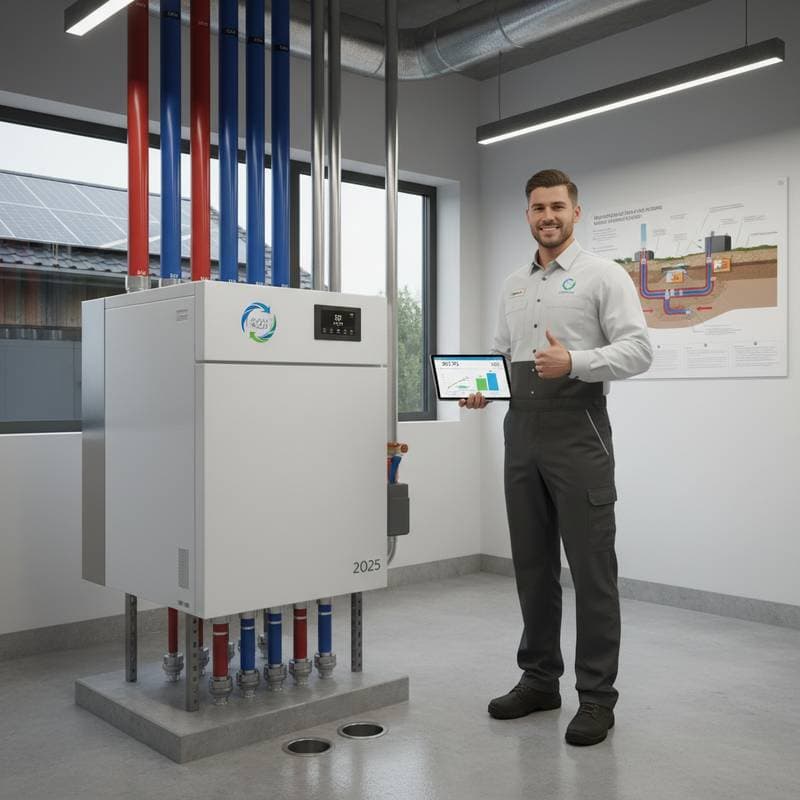New Rebates Make Electric Appliances Surprisingly Affordable
Homeowners face rising energy costs, yet opportunities exist to transition to efficient electric systems without significant upfront expenses. Federal and state programs introduced in 2025 provide substantial rebates for electrification upgrades. These incentives target appliances such as heat pumps, induction cooktops, and electric water heaters, making sustainable choices accessible.
The Inflation Reduction Act forms the backbone of these initiatives, allocating billions for residential energy efficiency. Rebates cover up to fifty percent of installation costs, with caps reaching eight thousand dollars per household. Eligibility requires income verification for maximum benefits, though all qualified projects receive support.
Understanding the 2025 Electrification Rebates
Rebates aim to accelerate the shift from fossil fuel-based systems to electric alternatives. Programs like Home Electrification and Appliance Rebates (HEAR) offer point-of-sale discounts, reducing immediate financial barriers. Participants apply through certified contractors who handle paperwork, ensuring seamless integration into home improvement projects.
Key features include tiered incentives based on household income. Low- and moderate-income families qualify for enhanced rebates, often covering one hundred percent of costs up to specified limits. Higher-income households receive proportional support, encouraging widespread adoption.
These rebates extend beyond appliances to whole-home systems. For instance, combining a heat pump installation with kitchen upgrades maximizes total incentives. Planning coordinates multiple rebates into a single project, avoiding redundant applications.
Targeted Appliances and Their Benefits
Heat pumps represent a cornerstone of electrification efforts. These systems provide heating and cooling with efficiency three times that of traditional furnaces. Rebates offset up to eight thousand dollars for air-source models, yielding annual savings of five hundred dollars or more on utility bills.
Induction cooktops offer precise control and rapid heating, surpassing gas stoves in safety and efficiency. Incentives provide up to eight hundred forty dollars per unit, with installations often qualifying for additional electrical upgrades. Homeowners report reduced cooking times and cleaner air quality post-installation.
Electric water heaters, particularly heat pump varieties, cut energy use by sixty percent compared to gas models. Rebates reach one thousand eight hundred sixty dollars, paired with insulation improvements for optimal performance. Such upgrades maintain hot water supply while lowering monthly expenses.
Other eligible items include electric dryers and ranges. Each contributes to a comprehensive electrification strategy, where cumulative rebates enhance overall value. Contractors assess homes to recommend combinations that align with rebate criteria.
Steps to Access Rebates and Plan Your Upgrade
Begin by evaluating your home's current systems. Identify appliances over ten years old or reliant on gas, as these present prime opportunities for replacement. Energy audits, available through local utilities, pinpoint high-impact areas without cost.
Next, select a qualified contractor from the program's database. Professionals verify eligibility and estimate rebate amounts during initial consultations. They submit applications on your behalf, streamlining the process.
- Schedule a free assessment to map out eligible upgrades.
- Review rebate calculations based on your selections.
- Proceed with installation, applying discounts at purchase.
- Claim any remaining incentives through post-project verification.
Timing matters, as funds allocate on a first-come, first-served basis. Early 2025 applications secure availability, especially in high-demand regions. Consult state energy offices for localized programs that supplement federal rebates.
Long-Term Savings and Environmental Impact
Electrification reduces reliance on fossil fuels, lowering household carbon emissions by up to forty percent. Beyond rebates, operational efficiencies compound savings over time. A fully electrified home might halve energy bills, with payback periods under five years.
Upgrades enhance comfort through even heating and advanced features like smart controls. Property values increase by an average of four percent in green-certified homes. Insurers often provide discounts for energy-efficient systems, adding financial perks.
Sustainability extends to community levels, where widespread adoption eases grid strain and supports renewable integration. Homeowners contribute to cleaner air and resilient infrastructure. These projects position residences for future energy landscapes.
Maximizing Incentives Through Strategic Planning
Integrate rebates with other efficiency measures for amplified results. Pair appliance upgrades with solar installations or attic insulation to unlock bonus credits. Comprehensive plans yield higher total rebates and faster returns on investment.
Track program updates, as expansions occur throughout 2025. Community workshops and online resources demystify processes, empowering informed decisions. Professional guidance ensures compliance and optimizes outcomes.
Electrification transforms homes into efficient, value-driven spaces. With rebates bridging cost gaps, the path to sustainability opens wide. Start your journey today for enduring benefits.









